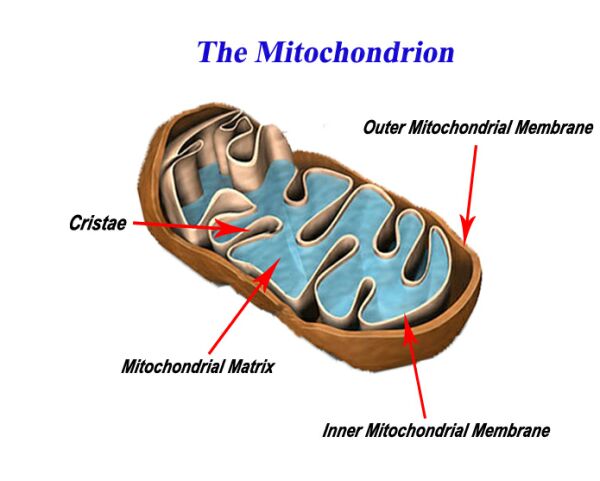(单词翻译:单击)
"This means," says Nuland, "that even if we count only those molecules present in amounts of more than 50,000 each, the total is still a very minimum of 100 million protein molecules in each cell. Such a staggering figure gives some idea of the swarming immensity of biochemical activity within us."
“这意味着,”纽兰说,“即使我们只统计那些每一种的数量在5万以上的分子,每一个细胞中所包含的蛋白质分子总数最少有l亿个。这是一个惊人的数字,我们从中可以了解一点我们体内生物化学活动的剧烈程度。”
It is all an immensely demanding process. Your heart must pump 75 gallons of blood an hour, 1,800 gallons every day, 657,000 gallons in a year—that's enough to fill four Olympicsized swimming pools—to keep all those cells freshly oxygenated. (And that's at rest. During exercise the rate can increase as much as sixfold.) The oxygen is taken up by the mitochondria. These are the cells' power stations, and there are about a thousand of them in a typical cell, though the number varies considerably depending on what a cell does and how much energy it requires.
这种活动所消耗的能量也是十分巨大的。你的心脏每小时必须输出约340升血液,每天则要输出8000多升,每年输出300万升——这足以装满4个标准的奥林匹克游泳池——以使所有细胞获得新鲜的氧气。(这是指在休息的时候,如果做剧烈运动,这个数字还要增加至6倍)。氧气被线粒体吸收,它们是细胞的发电站。一个细胞里一般有大约1000个这样的发电站,其具体数目根据细胞所做的事情及所需的能量的不同而有很大差异。
You may recall from an earlier chapter that the mitochondria are thought to have originated as captive bacteria and that they now live essentially as lodgers in our cells, preserving their own genetic instructions, dividing to their own timetable, speaking their own language. You may also recall that we are at the mercy of their goodwill. Here's why. Virtually all the food and oxygen you take into your body are delivered, after processing, to the mitochondria, where they are converted into a molecule called adenosine triphosphate, or ATP.
你大概还记得,我们在前面提到,据认为。线粒体原先是被俘获的细菌,如今是我们细胞中的寄居者。它们保留了自己的基因指令,按照自己的时间表来分裂,操自己的语言。你也会记得,多亏它们的好心照料,我们才得以安康。为什么这么说?因为你摄入体内的几乎所有食物和氧气经过加工后都被输送给线粒体,然后由它们将其转换为一种名为三磷酸腺苷的分子,也就是ATP。
You may not have heard of ATP, but it is what keeps you going.
你可能没听说过ATP,但正是它使你身体运转正常。


